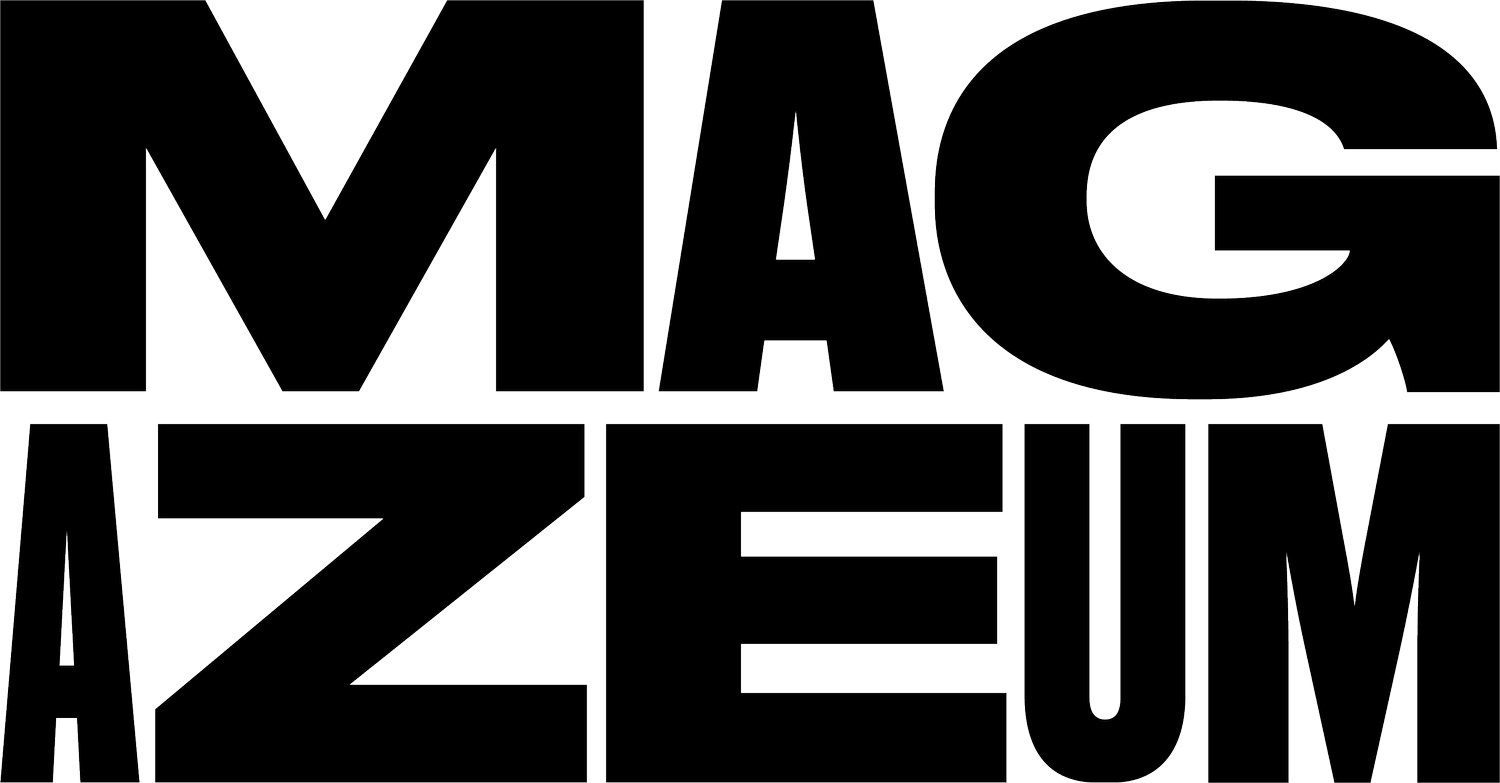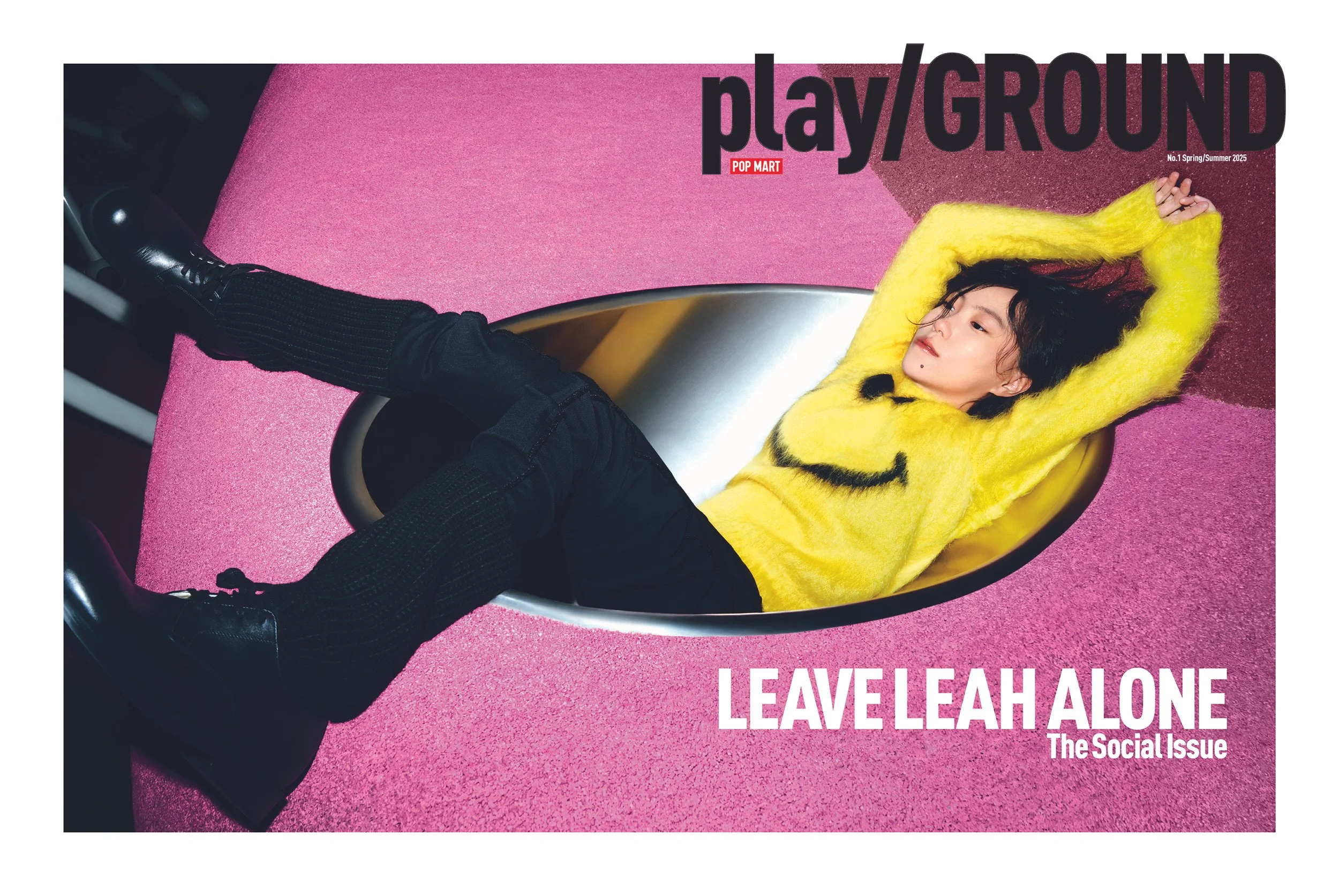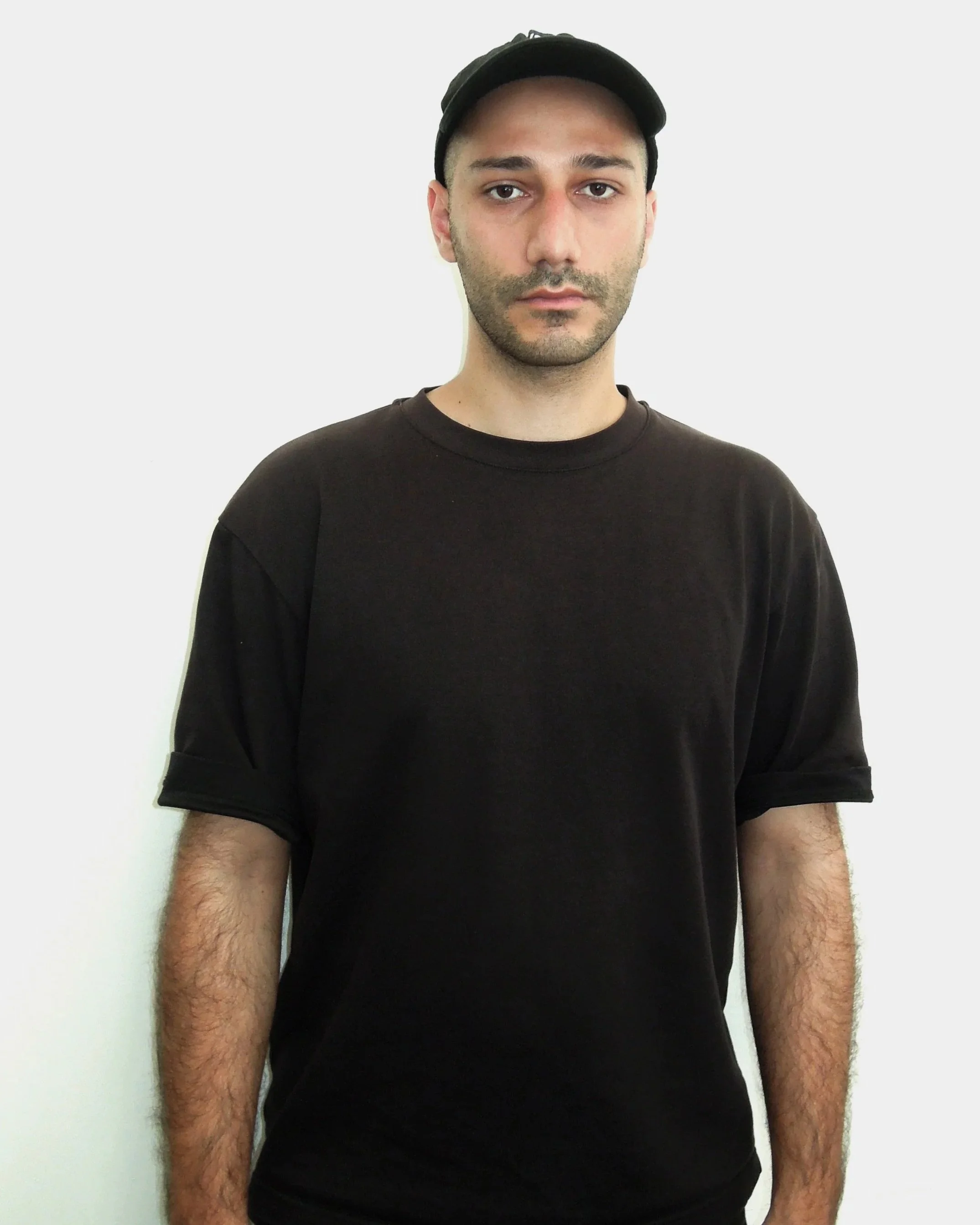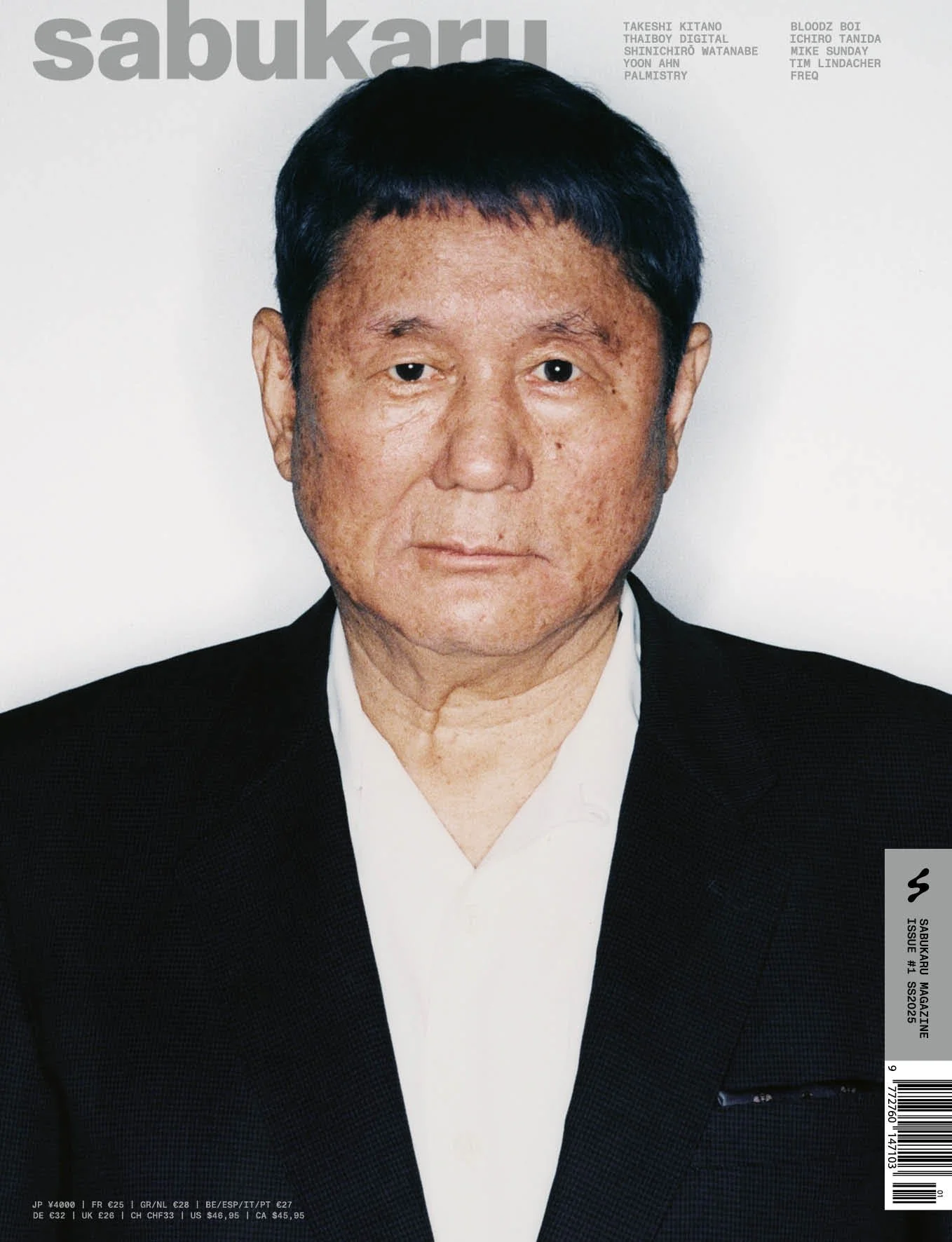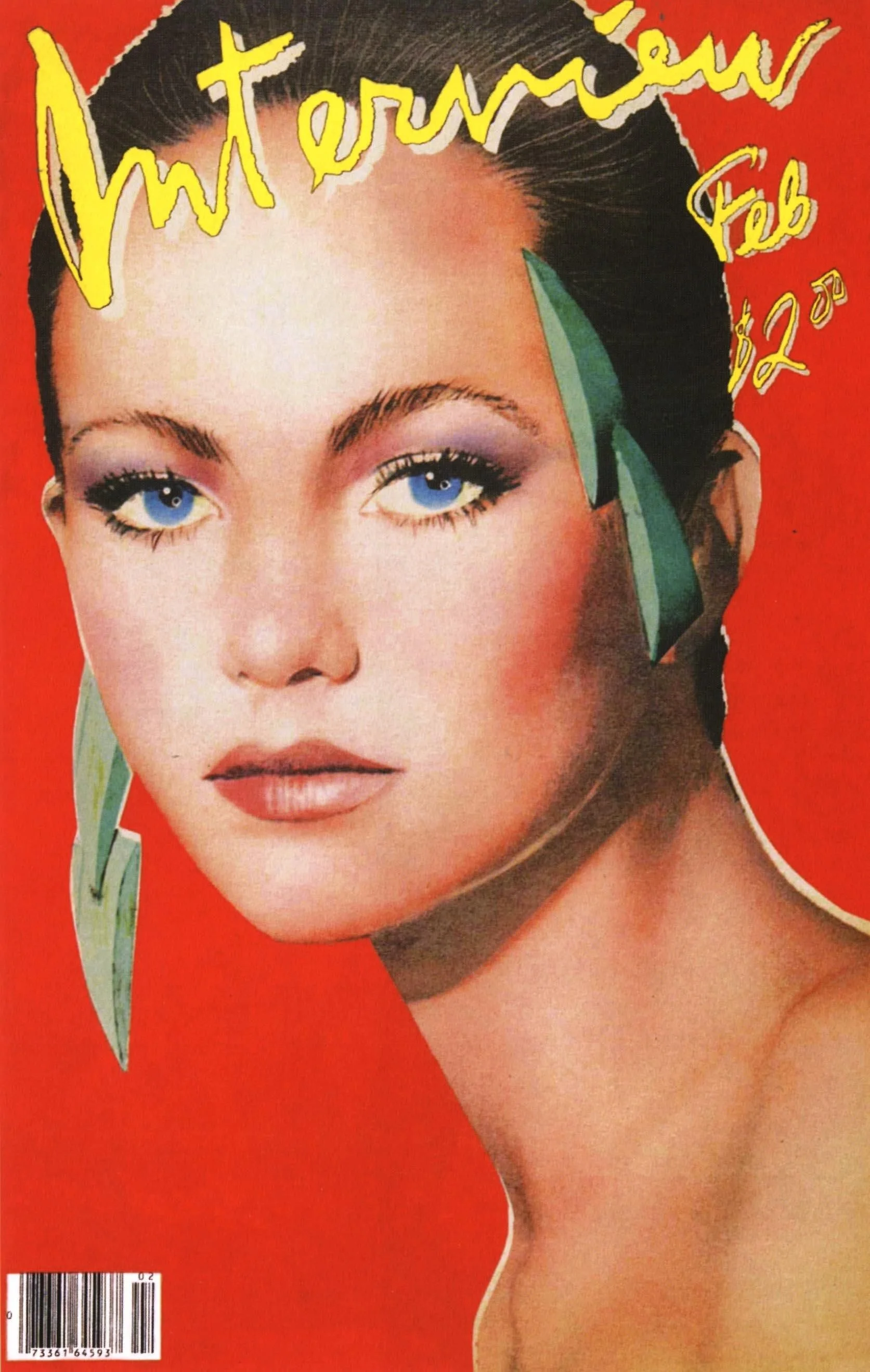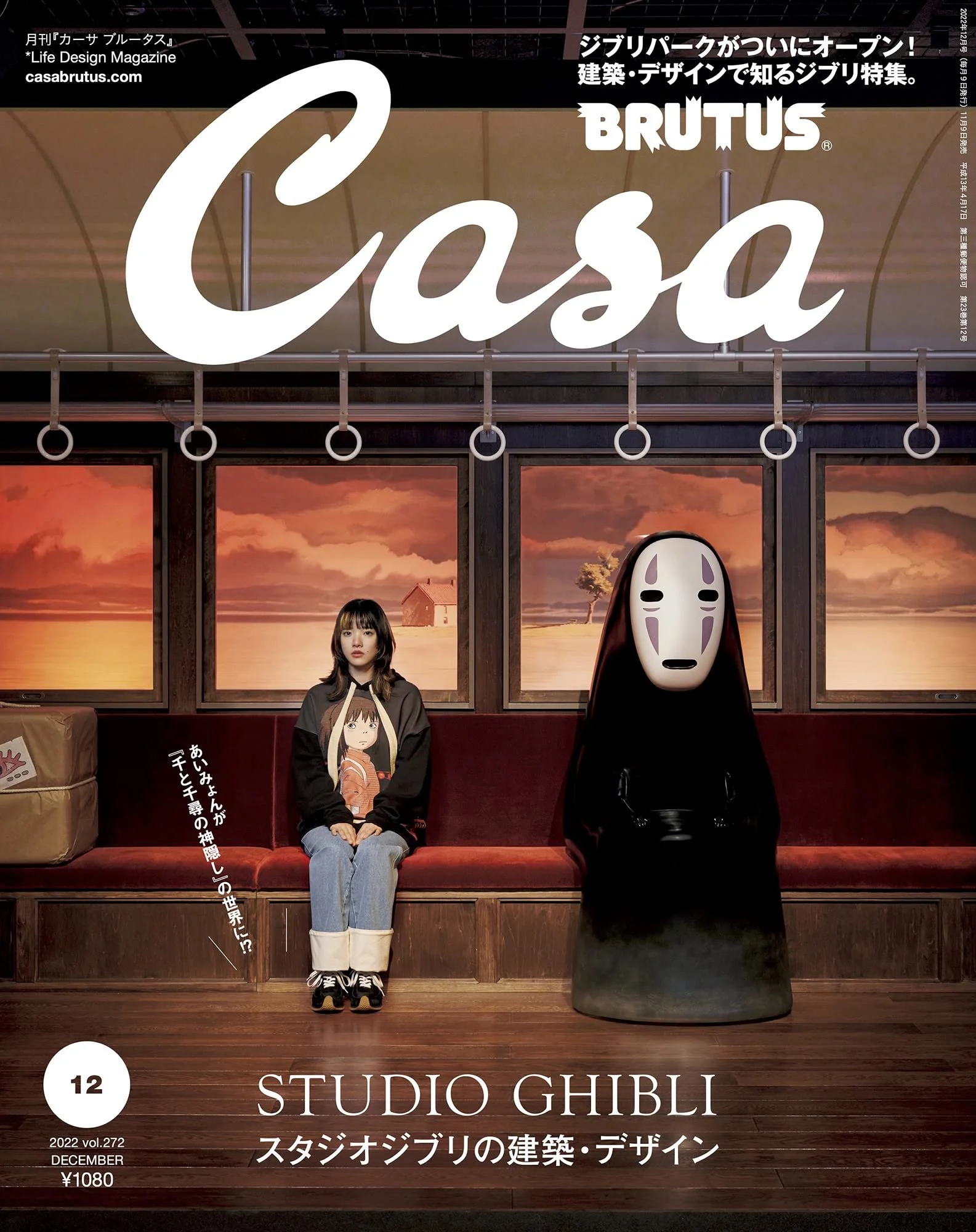Pop Goes Print
A conversation with the makers of play/Ground, a new magazine from Pop Mart. Interview by Arjun Basu
—
THIS EPISODE IS MADE POSSIBLE BY OUR FRIENDS AT FREEPORT PRESS.
“Today, creativity feels like it’s being squeezed into smaller and smaller boxes. Content is designed to chase likes, rack up views, serve a clear function—a purpose….we’re here—to celebrate creativity for creativity’s sake, no strings attached. Analog isn’t dead. It’s the new rebellion.”
This manifesto is a part of a striking editorial in the first issue of play/Ground, a new magazine created out of Singapore by Pop Mart, the maker of the Labubu. I honestly never thought I would a) write that kind of sentence in my life, and b) understand it, but here we are. It’s 2025! If you’re unfamiliar with Pop Mart you are unfamiliar with one of the largest creative companies in the world, one valued almost as much as Disney or Nintendo.
play/Ground is an extraordinary editorial project, championed by creatives and executives in a company that claims its mission is to “light up passion” so that its brand can promote a “galaxy of creative possibilities.” Got all that?
So by now you might be asking yourself a fundamental question: Why? Why this thing? And why print? Well, that same editorial anticipates this exact question:
“So, why print? Because print makes you pause. You can’t swipe past a paragraph in a magazine. You can’t multitask while turning a page. Print demands your attention and invites you to linger, to savor, to think…So here it is: our first issue. Take your time with it. Flip through the pages, spill some coffee on it if you must. Just don’t try to scroll.”
Amen.
Greg Grigorian
Vicson Guevara
Arjun Basu: We should start by describing, not play/Ground, but the publisher, which is Pop Mart. And a lot of people in the world may not know Pop Mart, but they know Pop Mart’s product. So what is Pop Mart?
Vicson Guevara: I’m just trying to figure out where to start.
Arjun Basu: Come on, Vicson. You can do it!
Vicson Guevara: We are an IP-based entertainment company. And, I would, entertainment is like a big, kind of a big scope, at the moment we mainly manufacture and market toys. Like collectibles, but we are expanding each other now.
Arjun Basu: Let’s just get it out of the way. What is your most popular product?
Vicson Guevara: Collectibles.
Arjun Basu: And what is the collectible that everyone is talking about right now?
Vicson Guevara: Labubu.
Arjun Basu: Labubu. I was telling Greg before, I never thought I would say Labubu during this podcast, and I’m talking to people who work for the company that make them. They’re Pop Mart, they're creating pop cultural products for everyone, right?
Vicson Guevara: Correct.
Greg Grigorian: Yeah.
Arjun Basu: So why, then, did they decide to create play/Ground?
Vicson Guevara: It was really an initiative that Greg and I pitched to our boss. At the time, we felt like we had very mature vehicles or ways to promote our commercial pursuits. But we really didn’t have anything that we could communicate with our consumers about what we are as a brand. Like what our values are as a brand, outside of sort of commercial aspects. I head this department here called Brand Creative. So we’re also responsible for all sorts of visuals and creative for really everything for the company, including product launches. And yeah, really that was really our motivation.
Arjun Basu: So it was a purely brand extension. So Pop Mart is not just a manufacturer of these things, but it’s also a store, correct?
Vicson Guevara: Yes. We’re very much a brick and mortar sort of company. Like retail is a very important aspect for us. . And we manage all our own stores.
Arjun Basu: In many countries in Asia.
Vicson Guevara: In Asia, in the US, in Europe. Okay. And pretty soon in the Middle East, yes.
Arjun Basu: So you’re global now. Greg, what is your background in terms of all of this?
Greg Grigorian: Vicson joined the company around the same time as I joined the company. He used to work at Condé Nast back in the day. And my very first full-time job right after college was also at Condé Nast, so we started chatting and then at one point we just, this topic of the magazine came up and we thought maybe, maybe we could try to do something different.
And so right now I’m actually just handling the magazine full time. We have a small team and for almost a year, I was the only person running it full-time. But now we’re building a team.
Arjun Basu: Yeah. So Greg, is your background at Condé Nast, was it editorial or was it in a different sphere?
Greg Grigorian: I started out as a writer. I was writing for GQ for like almost three years or so, and then when I was about to graduate I got an offer to be a digital editor at GQ when there was still GQ in Russia. And then I did that job for several months, but then I was really unhappy with it because as I was telling you, I was just listening to the Viscose Journal episode and what I could really relate to and what Jeppe was saying is that I entered the magazine world when it was all about digital, so I didn’t really get a lot of opportunity to write for the print magazine itself.
I was mostly doing digital, and digital was all about clicks, and it was all about numbers. And the most frustrating part for me was that I had a background in political science and economics, and then all I was doing all day was writing clickbait articles about “10 Things Every Man Needs To Know About Kardashians.” Like that sort of thing.
Arjun Basu: Yeah. You weren’t adding anything to the world at that point.
Greg Grigorian: Yeah.
Arjun Basu: And Vicson, your background was on the art side.
Vicson Guevara: Yes, I was the Group Creative Director for Condé Nast China. So I launched Vogue like at the time before I joined Condé Nast, I was actually consulting for the launch of Vogue China.
And after that they approached me and they were like, “Hey, we’re launching GQ, we’re launching AD, Architectural Digest. We’re launching Traveler. Do you want to move to Beijing?” Fifteen years later, I’m still in Beijing.
Arjun Basu: Okay. So what was the meeting like with Pop Mart with your colleagues there in terms of pitching this thing? Like what did you pitch? How close is this to what you pitched?
Vicson Guevara: Actually, I think it’s very close to what we pitched originally, and to be honest with you, I was—I don’t know how Greg felt about it—but I was quite surprised how well received it was by our boss. Like he’d maybe also wanted to do something like cultural or that, that sort of communicates what we are, what our culture is.
And he maybe didn’t really know how or what was the best way to do it. And when we pitched this to him, it was literally like the response was like, okay. No. Can we do four issues a year? How can we make this go quicker and faster? And it was actually, yeah, it was very well received, I thought.
Greg Grigorian: Yeah, I think we should give you some background in terms of the fact that play/Ground actually used to exist as a magazine before. And it was run by our PR department back in the day. And it was like this magazine that was all about product. It was all like, you flip through the pages, it’s all toys.
And there were maybe some interviews with like third creators every now and then, but it was literally just a product catalog. And that magazine, like, it didn’t have a huge circulation. It was given away for free to our customers and, or people who had a certain level of membership.
And then, it got canceled after just a couple years. We happened because we wanted to revive the magazine in a completely different format, but the magazine had already been canceled.
We didn’t know whether our leadership would be able to accept this idea, like basically doing this magazine all over again. But yeah, as Vicson said, they were quite open.
Arjun Basu: But they saw the difference between something that came from the marketing side and something that would come from the brand side. Exactly. When I was in custom publishing, the first thing I’d ask is, who’s the client? Because if the client was on the brand side, you could actually create something a lot of fun. If the client was in the marketing side, you’d be like, okay, this is going to be a little boring. So I just want to describe what it looks like to the listener here, because it is essentially an oversized newspaper. It’s quite large. Was it like this before or was it in a different format before?
Vicson Guevara: We wanted something really more unique in terms of format. And in a way, like, obviously a newspaper format is really an old format, but in a way it’s like the old new. That was how we saw it.
Arjun Basu: It feels like it’s the most analog or the printy-est thing you guys could have done. Yeah. And I can imagine that the contrast between the products, Pop Mart products actually, and what you have here is as far as it can get, that contrast. So there’s real intention with this format.
Vicson Guevara: Yeah. Actually the idea for the format was originally, if I remember correctly, Greg's idea. And he had this finding where he felt like young people now have this newfound interest in these old formats—vinyl, for example, or how now young people are so into Polaroid cameras. And for me, creatively, the newspaper format , there’s a lot of new ways you can play around with the design.
And we’re playing around with it a lot more for the next issue. We started playing around with it in the first issue, but in the second issue we do it a lot more where we play with like this poster idea where they really are separate sheets.
Arjun Basu: You say in the editorial: “Analog isn’t dead, it’s the new rebellion.” So you just say right from the start that this is the cool way to do what we’re doing. And on that level, it does fit your brand mandate, in terms of the pulse of the youth and the world and the stuff you do. And there’s a direct link between someone screaming when they open the bag and they see the Labubu inside. And this format that you have with play/Ground.
Vicson Guevara: Yeah. Yeah. And obviously the format is very social media friendly.
Arjun Basu: But it feels, it feels ironic. It’s very printy, but right from the start you’re saying like, basically social media and the internet is—I won’t say it’s killing us, you go after it pretty hard, right from the editorial. But then the photo of the staff is like everyone with their phones taking a photo of the photographer. So there’s this sort of irony that’s built in right from page one.
Greg Grigorian: Actually, like, when we started doing the magazine, we had this almost like an internal slogan in mind that was "social to print." Which might sound like a ridiculous idea, right? But we thought that we do want to create a product that’s very printy, but we really cannot afford to avoid the impact that the internet has on content and how people perceive content.
So we thought this product had to be a bridge. It is a physical medium, but we did want it to have certain sensibilities that are understandable to a person who grew up in the social media age because we are actually going after a pretty young audience. Like our audience, I’d say is roughly 22-25 years old.
Those people grew up in a social media age. A lot of those people haven’t really read a lot of magazines. They probably never held a newspaper in their hands. So we did want to have a point of reference that they would understand. So like we’ll use a language that is a little more social media in the magazine sometimes, but we’ll use emojis to communicate emotions or like certain things like that.
And that also goes back to the, to that profile image. We were trying to make an issue about socializing and how our phones, algorithms, everything impacts socializing nowadays. So it was all this big merger and as Vicson just said, like this format itself, like it is an old school format, but at the same time it’s the kind of format that’s very interactive, but it’s also photogenic.
We did think about that in the beginning. We felt like kids will probably want to take photos with this on social media. And there’s irony in that as well. We’re creating a super old school project product that existed—these sort of things existed way before social media, but now kids would want to take photos with it for social media. That was a huge consideration.
Arjun Basu: So that sort of starts answering my next question. Once you got the mandate or received the okay from your boss, how did you go about creating this magazine? You said the team was really small, but you used other people who were at the company. So how did you go about deciding what it would look like, deciding what was going to be inside it, deciding on the tone—how did that happen?
Greg Grigorian: I feel like it was a pretty natural restart. Actually, I think we have to start with the fact that from our initial conversation to the magazine getting made and published took us almost a year. Yeah. It was a pretty long process.
Like our initial conversations probably took around a couple of months. And then it took us maybe around six months to actually figure out what the magazine will look like, what our language will sound like, what the content will be like. At that point, I think we were doing an editorial meeting pretty much every week with Vix and I, and some other people from our team who wanted to get involved in the magazine.
And we were literally just bouncing ideas off each other and trying to figure out what would be our theme. The hardest part for the first issue was figuring out the theme. And I’m happy with what we came up with because I feel like the social theme is probably the best fit and the best way for us to describe to people why we’re doing a print magazine in 2024. That’s when we launched. It feels like ages ago, but it was actually just six months ago.
Arjun Basu: But what about the look of it? Because to me the irony starts with the look. Because the design is actually quite hyperactive, especially the front of book. The first few pages feel like a website in print, except it’s a newspaper and it’s an oversized newspaper. So you have more real estate than you actually have on a screen. So the irony just feels built in. You’re almost challenging the reader right from the start.
Vicson Guevara: Yeah. For me the front of the book—I was very much at the time inspired by, I don’t know if you know of this magazine, I don’t even know how long it’s been, but there was this New York magazine called List done by this guy, Serge Becker.
Arjun Basu: You’re reaching way back now, yeah.
Vicson Guevara: That was my time. That was my youth. But anyway, he had one issue. And it was literally just a magazine full of lists. And for me what was so cool about that magazine was there was something really voyeuristic about it.
I still have that magazine at home. What was so cool, for me, about that magazine was that you just keep going back to it and keep going back and you keep finding new things that you didn’t see last time. And the front of the book for me was very much inspired by that.
Like we wanted to do a list. Something very, I guess in a way, like in depth. And then hopefully, like when you look at it again, you’ll find something that you didn’t see before. And for the second issue we’re continuing that format in the front of the book.
Arjun Basu: And the other thing that I noticed that you do here is you have these full bleed images that are just—they wouldn’t work small. They need to be as large as they are because they’re quite simple, but they’re spectacular at the size that you have them. So there you really are almost like saying, “Look what this can do.”
Greg Grigorian: I’m really happy with the newspaper format that we stuck with, especially the oversized poster size format. I think at this point it’s one of our creative assets because we really can play around with it in a ton of ways. I was happy to find out after we made the magazine, that we were actually not the only ones who have this idea.
You probably know Sneeze, right, the skate magazine from New York. We’re taking a lot of inspiration from it as well going forward, because I feel like they’re doing a lot of things really well as well. And they do a lot of these like massive full bleed images that look very impactful in that specific format.
Arjun Basu: So like any magazine, you just look at it first and then you start reading it. So I thought the content was even more of a challenge to the reader because it’s almost like this critique, but a loving critique, of the way we live. Just reminding people that, Look, we live this way. So it wasn’t just the design. I honestly felt like experiencing this, there was an element almost of satire to it. But it’s not quite satirical because it is, like I said, done with affection, but you spend a lot of the editorial talking about very online things and also about people who aren’t online at all or who give up the internet. You have a thing on dating apps and how we’re not really happy with them. You have a thing obviously on social media usage. You have a thing on authenticity, but it’s in the form of a chat. It’s laid out like a chat. So it’s just there. It’s like a constant: Here’s the life we’re living. It’s online, but you’re going to read this in print.
Greg Grigorian: Yeah. We are living in this age of this dichotomy, right? I was talking to my intern when we were making the first issue. She’s this really young girl, she’s like 21. And she used to always complain to me. She was like, “Oh, I’m so tired of scrolling. Every day before I go to sleep, I got to scroll for an hour and then, and then I get tired and then I fall asleep. And I’m so tired of this.”
And that, that really hit pretty hard and gave us more motivation to make this issue. because I feel like that’s what a lot of young people are going through these days. But at the same time, like there’s no way you can actually avoid this lifestyle because that is how our world operates at this point.
Arjun Basu: You gave me the age before, but who is reading this? It’s not just Pop Mart customers.
Greg Grigorian: I would actually say like most people reading this are not Pop Mart customers. When we started making the magazine, we were hugely influenced by Colors by Benetton, right? And one thing they used to say about their magazine is that the purpose of the magazine is to communicate the intelligence of the Benetton brand to a very niche consumer. And that’s the attitude that we took and put into our own magazine.
We want to communicate the creativity of the Pop Mart brand to a pretty niche consumer as well. And it’s not necessarily a Pop Mart consumer. We’re going after the creative class, the people for whom maybe the Pop Mart product might not seem like maybe as serious or worthy of pursuing, but at the same time they may have this deep interest in culture.
They want to engage in something that’s a little deeper, a little more out there, a little edgier. And these are the people that we’re going after. And our audience that I said is pretty young, like probably around 25. That’s probably the median age. And then it’s mostly female at this point, and that’s where it mirrors the Pop Mart audience as well.
And for us, at least in that sense, we want to be closer to Pop Mart in ethos. It’s mostly people who live in big cities, people who have good education. That’s basically the consumer—every magazine has that reader basically right now. You know what I mean?
Arjun Basu: So what was your reaction to it within Pop Mart when it came out, and has it changed? It’s been out for a few months now.
Greg Grigorian: When we were about to launch it, it was fun because we did have to explain in a lot of meetings to people why we’re doing the magazine. Obviously a lot of people would ask us like, “Oh, this thing is so niche. Why are you doing this? Will this have any impact?”
But I do feel like it’s changing right now. Now we have people reaching out to us from other teams and recommending us like resources or asking for copies and trying to actively participate in the making of it. Which is really inspiring to see.
Vicson Guevara: For me the most overwhelming reaction I received from other colleagues is, “Wow, I didn’t realize Pop Mart could also be like this. I didn’t realize Pop Mart could be this cool, or this fashionable.” And it was very well received by a lot of our artists. It was very well received by them.
Arjun Basu: So then this becomes a good tool in a way, or an example, for Pop Mart internally as well, yeah. Then it’s a perfect brand play. Eighty percent of brand is internal, right? So this becomes very important as a show of what we mean when we do our stuff.
Vicson Guevara: It’s also a way of expanding our network, making new connections and new possibilities with our commercial aspect, our cultural aspect. Like we’ve already had two instances where we feature a certain person in the magazine or an artist and it ends up becoming a collaboration with one of our products. It expands our community.
Arjun Basu: And from a brand perspective, if I understand Pop Mart, this does feel like a brilliant sort of thing. And it feels like it’s not just sustainable, but it can expand as this sub-brand within Pop Mart’s universe.
Vicson Guevara: Yeah. That’s the plan.
Arjun Basu: Yeah. So I was going to ask: What’s the plan?
Vicson Guevara: Again, I really hope I think both Greg and I would agree that we’re really hoping that it will become like an IP. Like one of our IPs.
Arjun Basu: Like just a media division of Pop Mart.
Vicson Guevara: Yeah. Yeah. Because we can get our foot in certain doors that a lot of other departments can’t.
Greg Grigorian: And I think the best part to me is actually when we go on social media, a lot of times what you can see is people posting photos with our magazine, actually being like, “I’ve never bought Pop Mart product before, but this is the first time I decided to buy something from Pop Mart.” And I think that also says a lot about the possibilities that we have.
Arjun Basu: Yeah, because it can become—Pop Mart’s doing pretty well, but it’s like one of those background brands. Because the IP is in the front, that’s the frontline product. We mentioned Labubus, but you have a lot more. I’m going to guess that a lot of people who know what a Labubu is—and that’s like everyone—don’t necessarily know what Pop Mart is. And Pop Mart obviously sells more than just Labubus. That’s the hot thing now, but next year it’ll be something else. But this is a media product that can sustain itself for a long period of time and give some consistency to a brand that deals with all these different IPs, and changes and mutates all the time.
Vicson Guevara: Yeah, exactly.
Arjun Basu: So they definitely see that. So you’re not worried about the support going away. It’s there.
Vicson Guevara: At the moment, we’re not worried.
Arjun Basu: Well, I guess the other question is: how deep is that support? Because there are always going to be people in the company, like, Why are we doing this? Why are we spending this money? And as long as you have the champion and as long as that champion is high up on the totem pole, you’re okay. But is the support deep?
Vicson Guevara: I think it’s deep within the creative and design aspect of our company. And at the same time for our leadership, they also realize how important that aspect is for the brand. What we do relies heavily on creativity and design.
And I think what play/Ground does is helps to advance that aspect. So I would think that there is strong support for this. And we have a lot of support from our artists, which is very important as well.
Arjun Basu: And so how many issues a year are you aiming for?
Vicson Guevara: At the moment we’re doing two issues a year: Fall/Winter and Spring/Summer. But the bosses want us to do it quarterly. But at the moment, we just don’t have the capacity.
Arjun Basu: Yeah, when you get to quarterly, it’s almost like you’re doing it monthly because it’s just constant, and you just ramp up and you have to have a big staff. Quarterly is where the staff becomes big. And it’s a full-time staff.
Greg Grigorian: Yeah. But with the current media and how magazines these days are perceived and bought it’s a big question whether or not we need quarterly to be honest. But that’s another question.
Arjun Basu: I guess it depends on what you end up doing with the media as a brand overall. Your website is pretty bare bones right now. But that can become something too.
Greg Grigorian: Yeah. The website is not the main focus, especially because our magazine, the biggest chunk of our volume, is actually being distributed within China. And websites are not really a thing in China. Like people don’t really look at them. We’re putting a lot more effort into our social media, but again, we don’t want to be like a media on social media.
Arjun Basu: No, that makes sense. You spend the whole first issue making fun of those people.
Greg Grigorian: Yeah, exactly. So our social media approach, I’d say, is also going to be like we’re currently trying to figure it out and make sure that it’s different from what a lot of other media are doing on social media. And I want it to be closer to what we do in print, but we’re still figuring it out.
Arjun Basu: Yeah. You’ve done one of course. Have you completed your second one yet?
Vicson Guevara: We’re proofing the pages now, yeah. The content is all done. The design is all done.
Arjun Basu: So that comes out in October?
Vicson Guevara: November probably.
Arjun Basu: And is it the same number of pages or is it bigger?
Vicson Guevara: It’s eight more pages, yeah.
Arjun Basu: Okay. One form bigger.
Vicson Guevara: And we have a major, huge celebrity on the cover.
Greg Grigorian: Don’t reveal too much!
Vicson Guevara: I’m not revealing, I’m not saying who.
Arjun Basu: No, just that’s it. We’ll just stop at “huge celebrity.”
Vicson Guevara: Yeah. Two of them!
Arjun Basu: Oh, now I’m curious. I wasn’t curious before, but now I am.
Vicson Guevara: The last issue, although we felt like Leah was a very good representative of the brand, I think it’s sort of, like, a bummer that she’s not so well known globally.
Arjun Basu: Yeah, I had to look her up.
Vicson Guevara: Yeah. Our next issue is—this person is definitely, everyone knows her. Him or her.
Greg Grigorian: Leah was really well perceived in China, though. A lot of the kids that we were targeting this magazine at they did tell us—
Arjun Basu: Because she’s really big. She’s big there, right? She’s big, up-and-coming--
Greg Grigorian: Yeah. She has recognition both in the underground, and the mass market audience also really respects her. So she’s really perfect in that regard.
Vicson Guevara: She takes a different path, which is why we felt like she was so perfect for our first issue.
Arjun Basu: This—I guess I can call it the centerfold—the centerfold in here is really quite a stunning image. Again, playing with that size. You do it very well.
Vicson Guevara: There’ll be much more of that in the next issue.
Arjun Basu: Okay, I’ll start with you, Vicson. Three magazines that you love to tell people about right now.
Vicson Guevara: They’re all old magazines.
Arjun Basu: That’s fine.
Vicson Guevara: One definitely Interview. I have always been a big fan of Interview. I mentioned it before, during, when we launched, like our logo, our play/Ground logo is very much inspired by old issues of interview and the format as well. I'm a big fan of Interview. I can’t really think of any magazines that exist now that I like. Is that bad?
Arjun Basu: Oh you’re one of those people.
Vicson Guevara: Back in New York, I worked for this studio called Work in Progress and we also published our own magazine called Self-Service. And Self-Service was a major reason why I wanted to work at Work in Progress. Self-Service is no longer what it used to be, but those issues were very influential within the fashion industry. So that’s one that I really like.
If there’s a magazine that still exists now that I would recommend, probably, Casa Brutus. That’s the one magazine that I still buy occasionally now because I’m really into interior design and architecture.
Arjun Basu: Great. Greg?
Greg Grigorian: I think I’m on the same page with Vix in the sense that we both referenced a lot of old magazines. And as I mentioned before, Colors was a huge influence, like on play/Ground and overall, like on the ethos of the entire magazine.
I grew up with magazines like Vice—like that was basically my main point of reference. My very first internship ever was with Vice. That’s probably the biggest influence on the tone of our magazine. We’re not as outlandish as Vice was, but we’re trying to go there. A lot of our social media content right now is Vice inspired.
I don’t know if you watched the Eddie Huang, the Vice Is Broke documentary. I was very touched watching it. There were moments in it where I was like, “Oh, like old Vice was amazing.”
Arjun Basu: I’m in Montreal and I remember when Vice was just a street magazine here, and it’s amazing what it became and what happened to some of those guys. But like, I could get it at my corner store because that was one of the drop off points and we all watched Vice grow up. And then they hit, and they moved to Brooklyn, and then they became what we all know now. So yeah, they were very inspiring for a whole generation of people because they started from literally the bottom.
Greg Grigorian: Exactly. And I think it’s hard for us to do the same thing for a multitude of reasons. I want our magazine to also have balls, basically. That’s what I want for play/Ground.
And then as far as the most recent magazine that I bought uh, a couple of months ago when we were in Paris, I picked up the first issue of Sabukaru. I don’t know if you’ve heard of this one. It’s actually an online magazine that started out in Tokyo. Also, this German guy who’s also a Vice alumni. And he started this online magazine called Sabukaru, basically focusing on Japanese subcultures and a lot of their street style and that sort of stuff.
And then recently they launched their first print issue. And I think it’s pretty cool. It’s more in the traditional magazine format, but the way they play around with the layout and the content is pretty interesting. It’s from Tokyo, but it doesn’t look like a Japanese magazine. But at the same time they do integrate manga and that sort of stuff inside the magazine. It’s pretty cool.
Arjun Basu: The way your editorial ends—and I’m going to end this show that way: “...so here it is, our first issue. Take your time with it. Flip through the pages, spill some coffee on it if you must. Just don’t try to scroll.” I love that. Thank you guys.
Greg Grigorian: Appreciate it, Arjun.
Vicson Guevara: Thank you. Thank you so much.
Greg Grigorian: Three Things
Vicson Guevara: Three Things
Click images to see more.
More from The Full-Bleed Podcast
